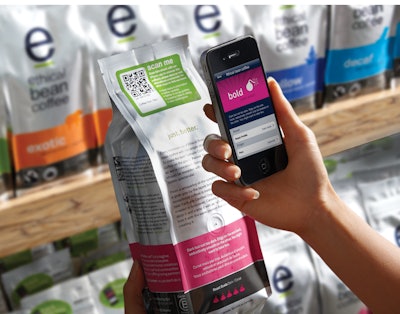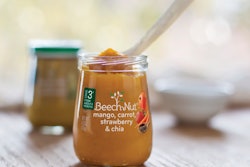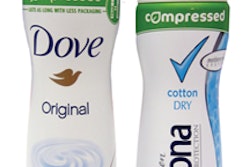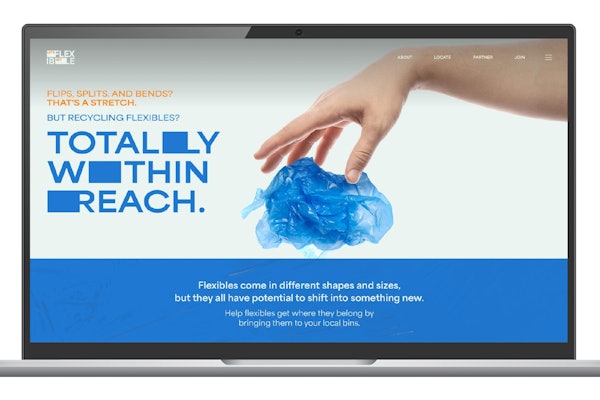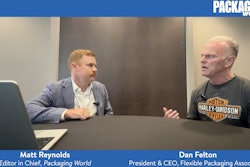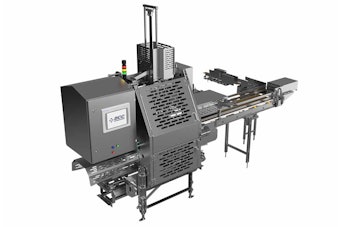When looking at opportunities for new products and packaging, brand owners tend to speak of “trends.” But what’s behind those trends? What causes them to become part of the consumer’s lifestyle? What motivates those trends?
According to Jocelyne Ehret, Director of Packaging Consulting Services for PTIS in Europe, part of HAVI Global Solutions, propelling those trends are “packaging drivers.” She explains, “Trends generally stay the same, they are a tendency exhibited by a group of people. Whereas drivers are often outside packaging’s control but provide strong packaging influence: the need behind the need.”
For example, while easy-open packages are a packaging trend, the driver behind that trend is people’s desire for convenience and freedom, she says.
To develop actionable insights for packaging, Ehret advises that packagers need to look at both trends and drivers. Analyzing the global environment for packaging, she has identified eight drivers—Emerging Markets, Retailer Impacts, Holistic Design Thinking, Sustainability, Consumers/Social Media/Personal Technology, Science & Technology, Laws & Regulations, and Anticipatory Issues—as well as four Consumer Drivers.
Emerging markets
According to Ernst & Young, “The global economy is at a turning point. Fast-growth economies in Asia, the Middle East, Africa, Latin America, and Eastern Europe now form almost half of global GDP and, in 2010, they contributed 70% to overall global growth.
“These trends are accelerating. By 2050, fast-growth economies are projected to account for 65% of the global economy. In contrast, most developed markets are still struggling to recover after the global recession.”
Notes Ehret, these fast-growth economies include not only the BRIC countries (Brazil, Russia, India, and China), which are expected to grow to more than 1 billion middle-class consumers in five years, but also the “Next Eleven” (N-11) nations—Bangladesh, Egypt, Indonesia, Iran, Mexico, Nigeria, Pakistan, the Philippines, Turkey, South Korea, and Vietnam—estimated to grow to 2 billion middle-class consumers in the same time frame.
“When we look at the middle class, we know they are urban, mobile, and global,” Ehret says. “If you are in the CPG market, you are going to have to adapt your package design, structure, and message to reach this new market.
“Today, packaging production is more product-oriented, but I believe in the future, it will be more consumer-oriented,” requiring customization and optimization, she adds.
Retailer impacts
With the added pressure of a 24/7-connected world, retailers are evolving the way in which they interact to fit more seamlessly into consumers’ busy lives, explains Ehret. “Everything is available,” she says, “everything is connected.”
In this environment, retailers and brand owners now have the opportunity for more interaction with the consumer, more of a two-way conversation—whether it’s through digital means, such as websites, or by gathering consumer information through loyalty cards.
Another Retailer Impact cited by Ehret is the rise of private-label, which she says in the U.K. is expected to grow faster than name brands. “Consumers are looking at the value for their money,” she says. “So in these changing economic times, this is something that will continue.”
Holistic design thinking
Design has become the key differentiator, with the first moment of truth (or FMOT) becoming more and more important. “Holistic design thinking involves the perfect combination of the left brain and the right brain,” says Ehret. It requires that the design not only meet the functional requirements for the product, such as protection, barrier, etc., but also address emotional aspects.
One real-world example given by Ehret of holistic design is a texturized aluminum can used by MillerCoors in 2012. The “grip can” featured a raised ink design that mimicked the feel of a football. The can was used in Mexico, with branding featuring the first division Mexican soccer team, Chivas de Guadalajara. “So they used a combination of emotional cues, along with science and technology,” she says.
Another example cited is Method’s innovative packaging for laundry detergent, including its flexible pouch refill and its 8X concentrated product in a sleek bottle with pump dispenser. Among the key packaging drivers used for their designs are Holistic Design, Science & Technology, Sustainability, and Consumer Drivers, Ehret says.
A third example, Orbit™ easy-open closures from Crown Closures Europe, which debuted on jars of the Duerr’s range of jams and marmalades in 2011, make consumers’ lives easier, by making it less difficult to open jars, tapping into Holistic Design, Science & Technology, and Consumer Drivers.
Sustainability
When it comes to sustainability, with most of the low-hanging fruit already having been picked (think recycling, recyclable materials, and material reduction), Ehret thinks CPGs are now getting down to more complex technologies—a trend that will last until 2010—and are now engaging in big systems thinking, which began in 2010 and will continue through 2025.
More complex technologies include refillables, alternate materials sourcing, product concentrates, hybrid bio-based materials with performance, and brand equity through sustainability.
Big system strategies include renewable polymers at cost, performance of petroleum-based polymers, zero waste, industrial and home composting, new breakthrough appliances, and energy from waste systems.
Another current trend cited by Ehret related to sustainability is the growing interest in using packaging to reduce food waste.
Consumers/social media/personal technology
“Social media has democratized the web,” says Ehret. “All consumers can now provide instant feedback and have several public platforms from which to voice their concerns.” Rather than addressing the FMOT, this driver is all about the ZMOT—the Zero Moment of Truth—or the moment of decision making for consumers when they shop online.
With online shopping, the stimulus for purchase can be reviews or comments by other consumers through social media sites, such as Facebook, Twitter, etc. “Because of this, it becomes crucial for a brand to have way of monitoring social media to anticipate any emerging issues,” says Ehret. “When there is something wrong, it grows very quickly into a big problem. Social media can be a positive and a negative, but we have to play with it.”
Science & Technology
Science & Technology involves many active and intelligent packaging technologies, especially those that can address the issue of food waste. Another technology noted by Ehret in particular is digital printing and its impact on mass-customization.
In 2013, Coca-Cola launched a promotion in which it used variable-data printing to personalize 800 million bottle labels. “It was a really big step in mass-customization through a big brand, so it had a lot of impact,” Ehret says.
Laws & regulations
“Packaging is a lightning rod for legislation and regulation, and its value is not understood by many legislators,” says Ehret. “As such, legislation in many areas is driving the selection of packaging.”
Anticipatory & emerging issues
As mentioned with the discussion of the impact of social media, Ehret notes that it is important for brand owners today to have a way to anticipate emerging issues, before they become a problem—whether it relates to new packaging materials, processes, or technologies, or emerging legislation and regulations. One method suggested by HAVI is data collection that is reviewed and updated on a regular basis.
Notes an article, “Anticipatory and Emerging Issues Management,” in the HAVI Global Solutions Quarterly Packaging Report – Q3 2013, “Knowing this information puts us in a position to avoid the element of surprise and the ability to anticipate these reforms before the rest of the market.”
Consumer drivers
According to Ehret, consumers’ motivation for purchasing is derived from four overreaching drivers:
• Safety/Peace of Mind, i.e., “It won’t hurt me, my family, or the planet.”
• Wellness, i.e., “It’s really good for me.”
• Gratification/Enjoyment, i.e., “It makes me feel good.”
• Convenience/freedom, i.e., “It’s so easy for me.”
For each driver, there are a number of dimensions. For example, under wellness are dimensions that include basic nutrition, nurturing, prevention, cosmetic, and performance, among others. “So when you design new packaging, it is important to understand where it fits in with all of these dimensions,” advises Ehret.
Ultimately, the goal for the brand owner is to turn the insight gleaned from packaging drivers and trends into foresight to understand what the consumer will be looking for in the future. “For example, let’s say at the end of this year, the taxes for fossil material will increase by 100 percent,” says Ehret. “What will you do? You can build a strategy or scenario regarding the different options and use criteria to evaluate all the scenarios to determine which one is most relevant.
“Foresight is the key to take packaging forward.”
